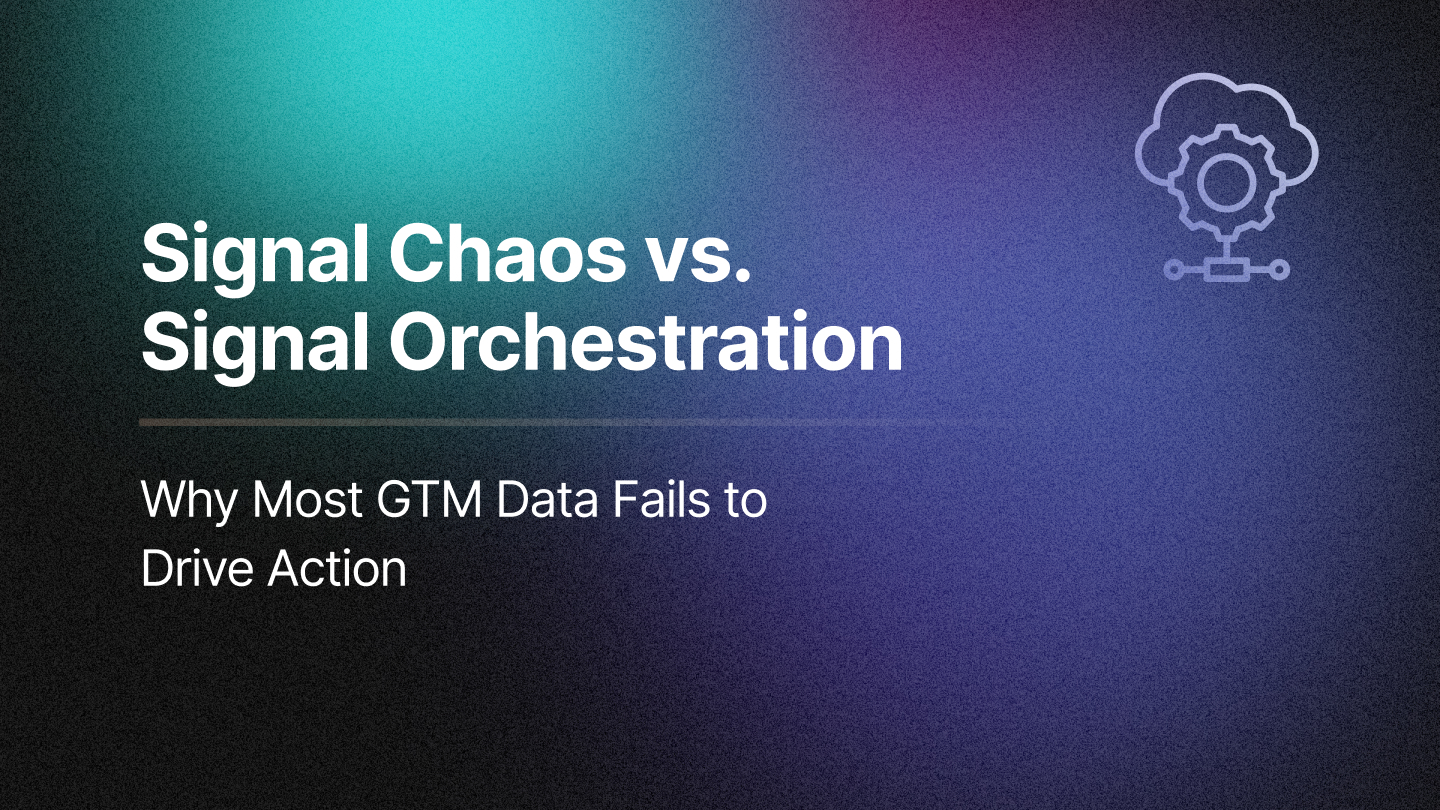Modern GTM teams don’t suffer from a lack of data. They already have predictive models, dashboards, and intent signals showing where performance is trending. Yet, despite this intelligence, the gap between knowing what to do and actually executing remains wide.
Campaign optimizations still happen after quarters close. Budget reallocations are slowed by manual approvals. Buyer signals sit idle in dashboards until someone intervenes. These delays compound across motions, creating invisible drag on pipeline velocity and revenue realization.
Agentic AI exists to eliminate this execution lag. By continuously observing real-time signals, applying decision logic, and acting within predefined guardrails, agentic systems turn insight into autonomous action. They handle the repeatable, data-driven workflows that demand speed and consistency, so GTM leaders can focus on creativity and strategy instead of reactive execution.
Below are five GTM workflows that are not only ready for agentic automation; they’re ideal entry points for bringing it to life.
1. Dynamic Budget Reallocation Across Channels and Regions
Quarterly planning gives structure, but static allocations often become outdated within weeks. When budgets can’t shift with changing market dynamics, teams overinvest in underperforming areas and miss chances to amplify what’s working.
Agentic AI can continuously monitor channel and regional performance, benchmark it against predictive ROI models, and reallocate spend dynamically within preset thresholds. If, for example, EMEA paid social consistently outperforms North America display, the system can automatically shift incremental budget while honoring pacing and guardrails.
This approach combines predictive intelligence with live responsiveness.
2. Campaign Pacing Optimization
Campaign pacing remains one of the most overlooked inefficiencies in marketing operations. Overspend early, and reach evaporates before quarter-end; underspend late, and pipeline targets slip. Manual monitoring catches problems only after inefficiencies are locked in.
Agentic systems can track pacing continuously, detect anomalies, and make fine-tuned adjustments automatically. If a LinkedIn campaign is consuming budget too quickly, the agent throttles delivery or reassigns funds to better-performing audiences. If a region’s campaign lags, the agent boosts its spend to maintain consistent velocity.
These micro-optimizations compound over time. RevSure’s Campaign Spend Reallocation and pacing capabilities provide the foundation for this level of real-time control, turning what was once reactive management into proactive orchestration.
3. Opportunity Acceleration from Real-Time Buyer Signals
Every GTM system is flooded with behavioral signals, content engagement, intent surges, and multi-threading patterns, but most sit unacted upon. The challenge isn’t visibility; it’s speed of response.
Agentic AI can continuously monitor signal clusters and trigger the right action at the right moment, routing an account to the appropriate rep, initiating a contextual nurture, or notifying sales exactly when buyer momentum peaks. Instead of waiting hours or days, actions happen within minutes of signal detection. Check below LinkedIn Live on RevSure's Form Response Agent:
4. Scenario Simulation and Continuous Planning
Traditional GTM planning is episodic, quarterly or annual, with static assumptions that quickly age out. Market conditions, buyer behavior, and cost dynamics shift weekly, leaving plans obsolete mid-cycle.
Agentic systems can change that. They run continuous “what-if” simulations, testing alternative spend splits, pipeline projections, or regional strategies, and surface recommendations based on current data. This makes planning an adaptive process instead of a calendar-driven event.
5. Lead and Account Prioritization
Static lead scoring models rarely keep up with real-world buyer behavior. By the time scores are recalculated, priorities have already changed, and high-intent accounts may have gone cold.
Agentic AI can fuse predictive scoring with live engagement signals to continuously re-rank leads and accounts. As new interactions occur, product usage spikes, pricing-page revisits, and executive engagement, the system adjusts outreach sequences and routing queues in real time.
RevSure’s Account & Lead Intelligence enables this adaptive prioritization, aligning sales effort with genuine buying momentum rather than outdated assumptions. The payoff: faster conversions, reduced cycle time, and better use of seller bandwidth.
Why These Workflows Work for Agentic AI
All five workflows share attributes that make them particularly well-suited for agentic orchestration:
- Defined objectives and measurable outcomes, making it simple to encode clear decision logic and guardrails.
- High frequency and repeatability, where even small time gains translate into large cumulative impact.
- Rich, real-time data signals, allowing confident, explainable automation.
- Tangible influence on pipeline and ROI, ensuring automation drives strategic outcomes, not just efficiency metrics.
These are precisely the workflows where human bottlenecks create friction and where intelligent automation compounds productivity rather than replacing expertise.
From Manual Execution to Intelligent Orchestration
Agentic AI doesn’t replace human strategy; it operationalizes it. Teams still define priorities, ethical boundaries, and campaign objectives. The agentic layer simply ensures these decisions are executed continuously, coherently, and without delay.
With RevSure’s GTM Agent Hub and Agent Builder, teams can design and deploy their own network of agents—each focused on a distinct GTM motion such as spend optimization, lead routing, or engagement acceleration. These agents work within defined policies and transparently report every action, giving leaders full oversight while eliminating operational latency.
The result is a new paradigm of intelligent orchestration, where marketing, sales, and RevOps systems work in concert, guided by logic but executed at machine speed.
Related Blogs







